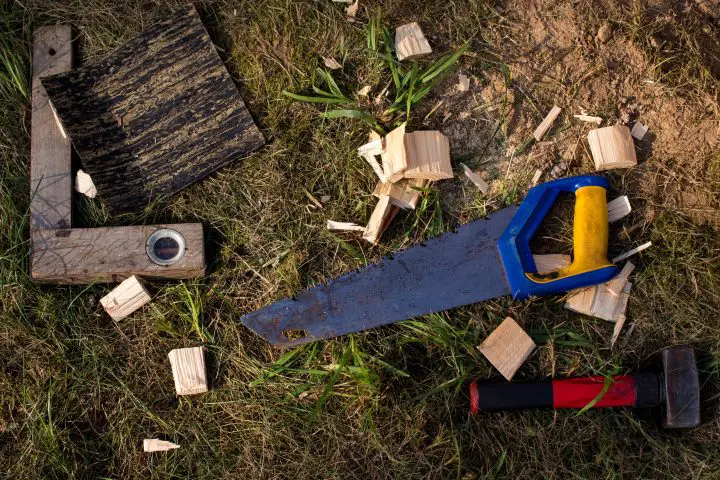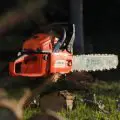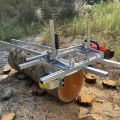One of the most common types of saws is the hand saw, which is excellent for homeowners as well as a variety of construction tasks. Much earlier than the chainsaw, in the 1500s, hand saws were created, and they remain very common today. Here are various handsaw varieties that fall within the broad category.
In this article, we’ll discuss the most commonly used types of hand saws along with their uses, so you know which one is right for you. Each will be useful to you for a different purpose, whether it be a home repair job or the removal of a tree in your backyard.
Table of Contents
Types of Handsaws
| Hand Saw | Uses |
|---|---|
| Hacksaw | Cutting through solid pipes, rods, and brackets, and breaking through plastic |
| Crosscut saw | Cutting across the wood grain |
| Fret saw | Cutting guitars, dovetails, curves, jewelry |
| Pruning saw | Pruning trees and large shrubs |
| Coping saw | Detailing in carpentry |
| Camping saw | Cutting small wood and other green growth |
| Veneer saw | Cutting hardwood veneers, laminates, and plastics |
| Japanese pull saw | Cuts that join wood, kerfs in plastic-like materials |
| Back saw | Cutting off pieces, slicing joints, forming dovetails |
| Rip saw | Cutting wood |
| Wallboard saw | Ideal for making rough cuts |
| Keyhole saw | Sawing out holes in wood or drywall projects |
| Bow saw | Cutting logs, trees and shrubs, branches |
| Bone saw | Cutting through bones |

Hacksaw
Any builder’s toolbox should contain this fine-toothed saw. Although it is not a precise saw, as its name suggests, it is highly inexpensive and effective. It’s beneficial to always have it on hand. A hacksaw works well for slicing through the plastic as well as sturdy pipes, rods, and brackets. A hacksaw is also the tool of choice for cutting through solid materials.
Make sure you adjust the saw until there is slack before using it to ensure safety. Check to see that the teeth are pointed away from the handle. Place the object in a vice so that everything is secure as you cut. Start with shorter cuts and use gloves and eyewear as you move along.
Crosscut Saw
This saw is distinct because it has a blade with handles on either end. Two individuals are required to hold the material while simultaneously sawing through it. Usually, the crosscut saw is useful for cutting against the grain of wood. Crosscut saws are typically used to cut huge logs into pieces.
You should put on gloves and safety eyewear before operating a crosscut saw. Maintain a tight grip on the saw for both of you, and go in a straight path. To prevent breakage, make sure the saw is sharp.
Fret Saw
A fret saw is a complex cutting tool that uses a tiny, narrow blade. Instead of being a blade designed to force through the material, it has artistic intent. Guitar frets, dovetails, curves, and jewelry can all be cut using a fret saw. A fret saw can handle any small, exact detail.
Even though fret saws are small, you should still exercise caution. Always cut away from yourself, and make sure your hand is always at a safe distance from the blade.
Pruning Saw
Pruning saws can be defined as that type of saw that is typically renowned for being used in the garden to quickly and easily prune trees and huge bushes. It is much more difficult to reach the branches that are concealed among the densely growing trees with these types of saws, which have a single curved handle coupled to a curved blade.
Pruning saws are recognized for having many more teeth per inch than saws of comparable size, making them a useful instrument for smaller pruning tasks when a chainsaw is not required.
While on the topic of trees, read our Firewood Identification guide to learn how to identify different types of firewood!
Coping Saw
Another form of a handsaw that is useful for accurate cutting is the coping saw. A coping saw works great for carpentry detailing, while a fret saw is useful for jewelry. The safety guidelines are similar to those for the fret saw. Keep your limbs away from the blade, and be sure to cut away from yourself. Keep it sharp to ensure accuracy and prevent damage.
Camping Saw
One of the best handsaws for carrying around is a camping saw. To make them more portable, many of them fold. They can quickly cut through objects and are light in weight, with fewer teeth. For cutting little wood and other green growth, they work best. Make sure you wear protection if you want to use a camping saw safely. To prevent harm, keep the blade a safe distance from your hand.
Veneer Saw
These are referred to as saws, and they are used to cut laminates, plastics, and hardwood veneers. These are the saws, which have a narrow, curved blade that is typically just 3 or 4 inches long and is double-edged. These are useful for working on smaller areas and can provide quick and smooth results because of their size-specific design.
Japanese Pull Saw
Although it is most frequently employed in Japanese woodworking, it has gradually entered the Western culture. The pull saw is the next handsaw on our list. Since they are inclined in the other direction, cutting is done physically by pulling rather than pushing. The following cuts, which unite pieces of wood and make kerfs in materials that resemble plastic, are frequently made with a pull saw.
A pull saw is a tool for making exact cuts. Because the cut occurs during the pull, be sure to move slowly to prevent smashing the blade into your body. A pull saw has a distinct kind of power.
Back Saw
The following sort of handsaw is a backsaw. Instead of a tiny blade, this saw features a thick one. With its strengthened back, you can cut while the steel remains straight. It has crosscut teeth that provide superb control. It is a razor-sharp blade.
The following tasks can be accomplished using a backsaw: cutting off sections, slicing joints, and creating dovetails. Although the saw is thicker, you have excellent control. When working on your project, put on safety gear to use a backsaw safely. For optimal results, keep the blade sharp and cut straight.
Rip Saw
A hand saw designed specifically for cutting wood is called a rip saw. Its name is derived from the parallel-to-wood-grain slicing motion it generates in the material. This action is distinct from many kinds of woodworking hand saws. When cutting, place yourself to the side rather than in front to prevent being hit if something pushes back. Cut with a tight grip and keep the blades sharp.
Wallboard (Drywall) Saw
These saws, which resemble keyhole saws in many ways, are also known as drywall saws. The sole distinction is that wallboard saws are typically found with a blade that is both shorter and wider. Their blades frequently have two edges and a row of sharp teeth running along both the top and bottom of the blade. These saws are best for making rough cuts since they typically have fewer teeth per inch than a keyhole saw.
Keyhole Saw
A keyhole has a distinctive form. At the base, it is wide, but as it gets longer, it becomes narrower. One kind of handsaw used to cut holes in drywall or wood projects is the keyhole saw. Always keep your eyes away from the motion when using a keyhole saw. It involves tugging; therefore, you must keep your body back to avoid hurting yourself.
Bow Saw
The bow saw is the last of the several handsaw kinds. The bow-like handle that arches over the straight blade are how it gained its name. They are manageable and fairly lightweight. They work well if you want to be both speedy and organized at once.
The ideal materials to cut with a bow saw are branches, trees, and logs. They can precisely cut through these. Put on gloves and safety glasses before using a bow saw. Make sure there is space for both your hand and the saw. Maintain blade sharpness and maintain a firm grip on the handle.
Bone Saw
The saw that is used to cut bones is referred to as a bone saw. These are referred to as the saws used by butchers in the meat industry or by hunters to slash through deer or other game. The blade of the saw is made of stainless steel, which is ideal for these saws because it won’t rust when in touch with animal blood.
FAQs (Frequently Asked Questions)
Which is a common type of hand saw?
The most common types of hand saws include a hacksaw, crosscut saw, fret saw, pruning saw, coping saw, camping saw, veneer saw, Japanese pull saw, back saw, rip saw, wallboard saw, keyhole saw, bow saw, and bone saw.






